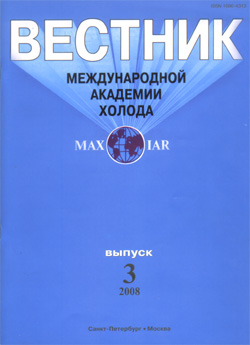
Sunflower meal fractionation using various crushing techniques

Annotation
The article concerns the study of the fractional composition and crude protein content in the products of mechanical fractionation of sunflower meal. For our country, the rational use of protein products from sunflower seeds, the potential of which is still significantly underestimated, is of particular relevance. The article examines the method of mechanical fractionation of sunflower meal and describes options for its implementation. The aim of the article was to compare two methods of grinding sunflower meal and products obtained after fractionation of crushed samples. The efficiency of fractionation is determined by the yield of the target product, its composition and mechanical properties. The meal was crushed in two ways: using a rotary knife grinder and a cam mill. Fractionation of grinding products was carried out by sieves with hole diameters. The crude protein content was determined using the Kjeldahl method, and the crude fiber content using the Henneberg–Stoman method. The particle size distribution in the target product was determined by laser diffraction. All the results presented in the article were obtained using modern analytical instruments and research methods. The mass yields of individual meal fractions with different particle sizes after mechanical sieving were studied. The content of crude protein and crude fiber in each fraction was determined. The possibility of obtaining a fraction with a high content of crude protein from sunflower meal has been shown. For this fraction, the particle size distribution, which affects the possibility of its use, has been studied. This fraction, after additional processing, can be used as an ingredient in flour products.
Keywords
Постоянный URL
Articles in current issue
- Helium purification system based on KDHPS-CC purifier for an ultracold neutron source based on superfluid helium
- Designing energy-efficient air regeneration systems for hermetically sealed objects
- An exergetic method for evaluating the efficiency of low-temperature power plants using low-potential cryoproduct heat
- Increasing energy efficiency of flexible solar panels by intensification of their cooling in the modified design of solar wind generator blades
- Bakery product with an increased iron content
- Optimization of the enzymatic process of fat isolation from secondary fish raw materials for use in biotechnology
- Theoretical substantiation of using dissipative method for studying rheological properties of highly viscous liquids
- Scientific and practical rationales and development of gluten-free custom cake technology for people with lactose intolerance
- Heat transfer of a cylindrical tube for the case of a radiant heat flow from outside and under a boundary condition of the third kind from inside
- Iterative method for determining the parameters of exhaust process
